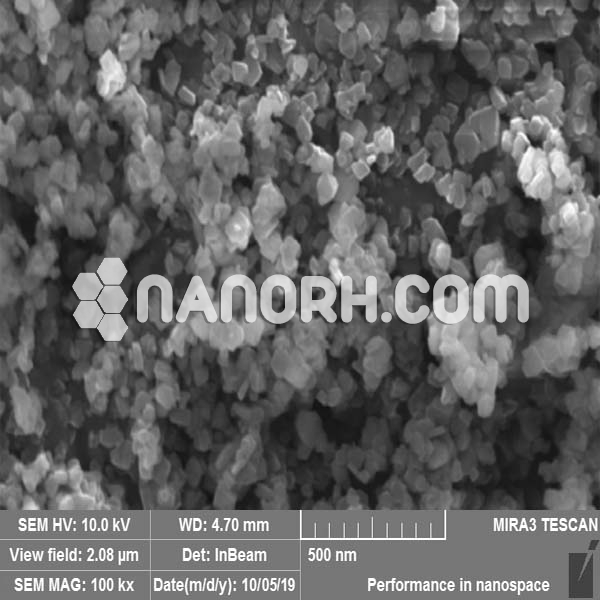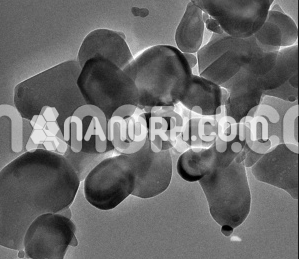| Arsenic Oxide Nanoparticles | |
| Product Number | NRE-3004 |
| CAS No. | 1327-53-3 |
| Formula | As2O3 |
| Molecular Weight | 197.84 / g/mol |
| APS | <100 nm (Can be Customized) |
| Purity | 99.9% |
| Color | White |
| Density | 3.74 g/cm³ |
| Melting Point | 312.2 °C |
| Boiling Point | 465 °C |
Arsenic Oxide Nanoparticles
Cancer Treatment: Arsenic trioxide (As2O3) has been used as a chemotherapeutic agent for the treatment of certain types of cancer, such as acute promyelocytic leukemia (APL). Arsenic oxide nanoparticles can be used to improve the delivery of arsenic trioxide to cancer cells, enhancing its therapeutic effectiveness while minimizing its toxicity to healthy cells.
Drug Delivery: As2O3 nanoparticles can be used as drug delivery vehicles. They can encapsulate therapeutic agents and target specific cells or tissues, improving drug solubility and bioavailability while reducing side effects. This is particularly useful in cancer therapy and other diseases.
Photothermal Therapy: As2O3 nanoparticles can absorb and convert near-infrared (NIR) light into heat, making them suitable for photothermal therapy. When targeted to cancer cells and exposed to NIR light, these nanoparticles can selectively destroy cancer cells while sparing healthy tissue.
Biomedical Imaging: As2O3 nanoparticles can be used as contrast agents in various imaging techniques, such as magnetic resonance imaging (MRI), computed tomography (CT), and fluorescence imaging. They provide enhanced imaging capabilities, aiding in the diagnosis and monitoring of diseases.
Antibacterial Agents: Research has shown that As2O3 nanoparticles possess antibacterial properties. They can be used in the development of antibacterial coatings for medical devices, wound dressings, and other healthcare applications.
Environmental Remediation: Arsenic contamination is a significant environmental concern. Arsenic oxide nanoparticles can be employed in the removal of arsenic from water and soil through processes like adsorption, coagulation, and precipitation. They can help mitigate the impact of arsenic pollution.
Catalysis: Arsenic oxide nanoparticles can serve as catalysts in various chemical reactions, including oxidation and reduction reactions. They have potential applications in industrial processes, such as the production of chemicals and clean energy technologies.
Optoelectronics: Arsenic oxide nanoparticles have unique optical properties and can be used in the development of optoelectronic devices, such as sensors, photodetectors, and light-emitting diodes (LEDs).
Energy Storage: Research is ongoing to explore the potential use of arsenic oxide nanoparticles in energy storage devices, such as batteries and supercapacitors, to improve their performance and energy density.
Thermoelectric Materials: Arsenic oxide nanoparticles can be incorporated into thermoelectric materials to enhance their thermoelectric efficiency, which is important for converting heat into electricity in applications like power generation and waste heat recovery.




